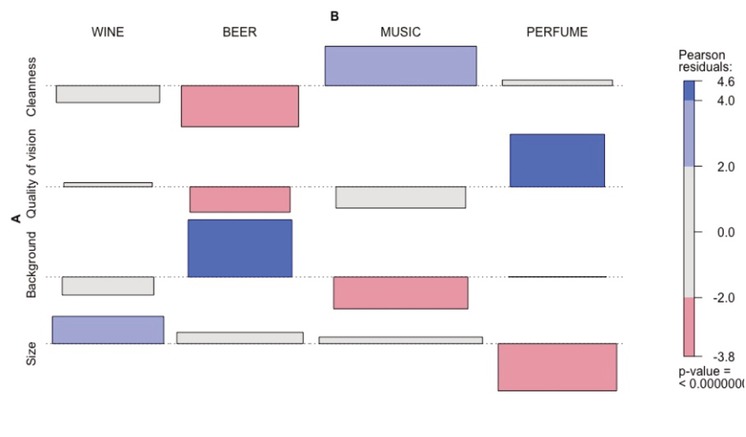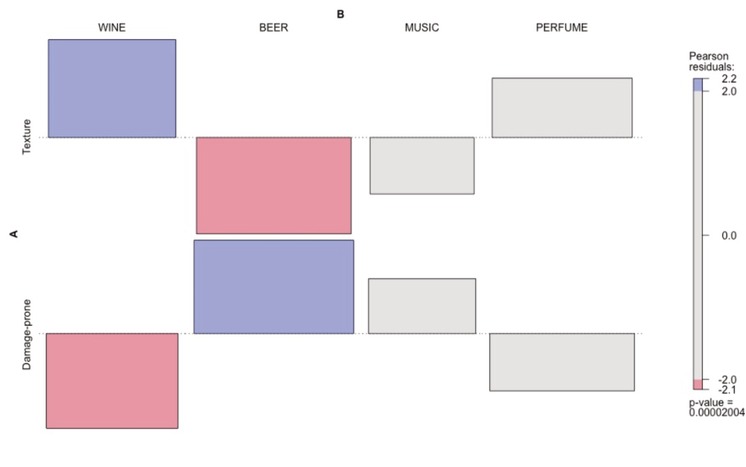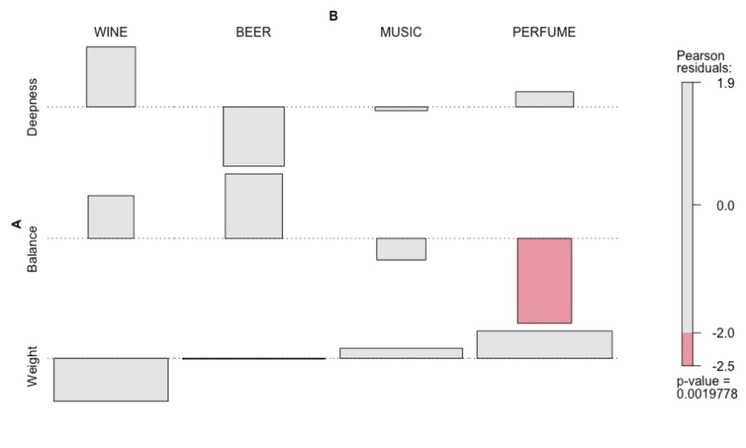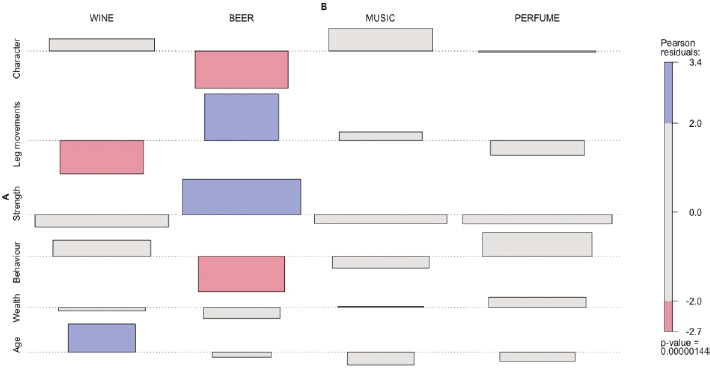Abstract
This paper presents various types of metaphors within the emergent wine discourse in Polish. The analysis is corpus-based and it employs examples excerpted from Synamet – a semantically and morphosyntactically annotated corpus of Polish synesthetic metaphors. Polish wine discourse is juxtaposed against other thematic types of discourse included in the corpus, e.g., texts devoted to perfume, beer, or music, in order to point to their specificity with respect to metaphorical productivity. This comprehensive study of metaphorical expressions and the statistical analysis of the corpus clearly show which source frames are predominant in the conceptualization of wine taste, and which frame elements are most frequently activated. Apart from lexicalized metaphors, which constitute a significant part of Polish metaphorical expressions in wine discourse, we have observed many instances of creative elaboration of basic metaphorical images. Polish wine discourse also abounds with atypical metaphors that cannot be fully accounted for in terms of cross-domain mappings. These textual phenomena include layered metaphors, mixed metaphors, and narrative metaphors. The results of the analysis undermine the attempts to create a universal model of synesthesia in language, and call into question the existing models of source-to-target mappings for synesthetic metaphors.
References
Amoraritei, L. 2002. “La métaphore en oenologie”. metaphorik.de 3. 1–12.Suche in Google Scholar
Barcelona, A. 2000. “On the plausibility of claiming a metonymic motivation for conceptual metaphor”. Metaphor and metonymy at the crossroads: A cognitive perspective 31–58.10.1515/9783110894677.31Suche in Google Scholar
Caballero, R. 1996. “Cutting across the senses: Imagery in winespeak and audiovisual promotion”. In: Forceville, C.J., and E. Urios-Aparisi (eds.), Multimodal metaphor. Berlin and New York: Mouton de Gruyter. 73–94.Suche in Google Scholar
Caballero, R. 2007. “Manner-of-motion verbs in wine description”. Journal of Pragmatics 39 (12). 2095–2114.10.1016/j.pragma.2007.07.005Suche in Google Scholar
Caballero, R. and E. Suárez-Toste. 2010. “A genre approach to imagery in winespeak: Issues and prospects”. In: Low, G., A. Deignan, L. Cameron and Z. Todd (eds.), Researching and applying metaphor in the real world Amsterdam: Benjamins. 265–287.10.1075/hcp.26.15cabSuche in Google Scholar
Cacciari, C. 2008. “Crossing the senses in metaphorical language”. In: Gibbs, R.W. (ed.), The Cambridge handbook of metaphor and thought Cambridge: Cambridge University Press. 425–443.10.1017/CBO9780511816802.026Suche in Google Scholar
Charteris-Black, J. 2016. “The ‘dull roar’ and the ‘burning barbed wire pantyhose’: Complex metaphor in accounts of chronic pain”. In: Gibbs, R.W.Jr. (ed.), Mixing metaphor Amsterdam: Benjamins. 155–176.Suche in Google Scholar
Classens, C. 1993. Worlds of senseExploring the senses in history and across cultures London and New York: Routledge.Suche in Google Scholar
Creed, A. 2014. “Wine and metaphor: cross-cultural [dis]harmony”. In: Midgley, W., K. Trimmer and A. Davies (eds.), Metaphors for, in and of education research. Newcastle upon Tyne: Cambridge Scholars Publishing. 10–25.Suche in Google Scholar
Crisp, P. 2008. “Between extended metaphor and allegory: Is blending enough?”. Language and Literature 17(4). 291–308.10.1177/0963947008095960Suche in Google Scholar
Dancygier, B. and E. Sweetser. 2014. Figurative language. Cambridge: Cambridge University Press.Suche in Google Scholar
Fillmore, C. 1982. “Frame semantics”. In: The Linguistics Society of Korea (eds.), Linguistics in the morning calm Seoul: Hanshin Publishing Co. 111–137.Suche in Google Scholar
Fischer, Ch. 2011. Leksykon wina [A lexicon of wine]. (Transl. by J. Kutner.) Warszawa: Olesiejuk.Suche in Google Scholar
Fludernik, M. 2009. “The cage metaphor: Extending narratology into corpus studies and opening it to the analysis of imagery”. In: Heinen, S. and R. Sommer (eds.), Narratology in the age of cross-disciplinary narrative research Berlin: Walter de Gruyter. 109–128.Suche in Google Scholar
Gibbs, R.W. (ed.). 2016. Mixing metaphor Amsterdam: Benjamins10.1075/milcc.6Suche in Google Scholar
Gibbs, R.W. 2017. Metaphor wars. Conceptual metaphors in human life. Cambridge: Cambridge University Press.10.1017/9781107762350Suche in Google Scholar
Jaensch, E.R. 1929. Grundformen menschlichen Seins Berlin: O. Elsner Verlagsgesellschaft m.b.h.Suche in Google Scholar
Judycka, I. 1963. “Synestezja w rozwoju znaczeniowym wyrazów” [Synaesthesia in the semantic development of words]. Prace Filologiczne XVIII. 59–78.Suche in Google Scholar
Kimmel, M. 2010. “Why we mix metaphors (and mix them well): Discourse coherence, conceptual metaphor, and beyond”. Journal of Pragmatics 42(1). 97–115.10.1016/j.pragma.2009.05.017Suche in Google Scholar
Kövecses, Z. 2016. “A view of “mixed metaphor” within a conceptual metaphor theory framework”. In: Gibbs, R.W. (ed.), Mixing metaphor Amsterdam: Benjamins. 3– 15.Suche in Google Scholar
Lakoff, G., and M. Johnson. 2008 [1980]. Metaphors we live by Chicago: University of Chicago Press.Suche in Google Scholar
Lehrer, A. 1975. “Talking about wine”. Language 51 (4). 901–923.10.2307/412700Suche in Google Scholar
Lehrer, A. 2009 [1983]. Wine and conversation Second edition. Oxford–New York: Oxford University Press.10.1093/acprof:oso/9780195307931.001.0001Suche in Google Scholar
Lievers, F.S. 2015. “Synaesthesia: A corpus-based study of cross-modal directionality”. Functions of language 22(1). 69–95.10.1075/fol.22.1.04strSuche in Google Scholar
Marks, L.E. 1996. “On perceptual metaphors”. Metaphor and Symbolic Activity 1(1). 36–96.10.1207/s15327868ms1101_3Suche in Google Scholar
Miączyński, P. 2018. “Polacy piją coraz więcej wina. Czyli awansowaliśmy społecznie. A najbardziej polubiliśmy prosecco” [Polish people drink more and more wine. Or, how we have advanced in social terms. And we have come to like prosecco the best]. <http://wyborcza.biz/biznes/7,147743,22905002,polacy-pija-coraz-wiecejwina-to-oznaka-przeniesienia-sie-do.html>Suche in Google Scholar
Mitrenga, B. 2009. “Nazwy zmysłu smaku w języku polskim” [Names of the sense of taste in Polish]. LingVaria 4(2). 227–236.Suche in Google Scholar
Mitrenga, B. 2014. Zmysł smaku. Studium leksykalno-semantyczne [The sense of taste. A lexico-semantic study]. Katowice: Wydawnictwo UŚ.Suche in Google Scholar
Müller, C. 2016. “Why mixed metaphors make sense”. In: Gibbs, R.W. (ed.), Mixing metaphor Amsterdam: Benjamins. 31–56.Suche in Google Scholar
Naszkowska, K. 2017. “Polacy piją coraz więcej wina – rośnie spożycie i produkcja. Jakie wina najchętniej kupujemy? Półwytrawne i tanie” [Polish people drink more and more wine. What wines do we buy most often? Cheap semi-sweet ones]. wyborcza.plSuche in Google Scholar
Negro, I. 2012. “Wine discourse in the French language”. RAEL: Revista Electrónica de Linguistica Aplicada (11). 1–12.Suche in Google Scholar
Paradis, C. 2010. “Touchdowns in winespeak: Ontologies and construals in use and meaning-making”. In: Goded Rambaud, M. and A. Poves Luelmo (eds.), Proceedings from the 1st Conference on Linguistic Approaches to Food and Wine Descriptions. Madrid: UNED. 37–55.Suche in Google Scholar
Paradis, C. and M. Eeg-Olofsson. 2013. “Describing sensory experience: The genre of wine reviews”. Metaphor and Symbol 28(1). 22–40.10.1080/10926488.2013.742838Suche in Google Scholar
Paradis, C. and C. Hommerberg. 2016. “We drink with our eyes first: The web of sensory perception, aesthetic experience and mixed imagery in wine reviews”. In: Gibbs, R.W. (ed.), Mixing metaphor Amsterdam: Benjamins. 179–201.Suche in Google Scholar
Ramachandran, V.S. and E.M. Hubbard. 2001 a. “Psychophysical investigations into the neural basis of synesthesia”. Proceedings of the Royal Society of London, Biological Sciences 268. 979–983.10.1098/rspb.2000.1576Suche in Google Scholar
Ramachandran, V.S. and E.M. Hubbard. 2001b. “Synesthesia: A window into perception, thought, and language”. Journal of Consciousness Studies 8(1). 3–34.Suche in Google Scholar
Ritchie, L.D. 2010. “‘Everybody goes down’: Metaphor, stories, and simulations in conversations”. Metaphor and Symbol 25. 123–143.10.1080/10926488.2010.489383Suche in Google Scholar
Ritchie, L.D. 2017. Metaphorical stories in discourse Cambridge: Cambridge University Press.10.1017/9781316717172Suche in Google Scholar
Rogowska A. 2007. Synestezja [Synaesthesia]. Opole: Oficyna Wydawnicza PO.Suche in Google Scholar
Shen, Y., and M. Cohen. 1998. “How come silence is sweet but sweetness is not silent: A cognitive account of directionality in poetic synaesthesia”. Language and Literature 7. 123–140.10.1177/096394709800700202Suche in Google Scholar
Stickles, E., O. David and E. Sweetser. 2016. “Grammatical constructions, frame structure, and metonymy: Their contributions to metaphor computation”. In: Healey, A., R.N. de Souza, P. Peškov and M. Allen (eds.), Proceedings of the 11th Meeting of the High Desert Linguistics Society Albuquerque, NM: High Desert Linguistics Society. 317–345.Suche in Google Scholar
Suárez Toste, E. 2007. “Metaphor inside the wine cellar: On the ubiquity of personification schemas in winespeak”. metaphorik.de 12(1). 53–64.Suche in Google Scholar
Suárez-Toste, E. 2013. “One man’s cheese is another man’s music: Synaesthesia and the bridging of cultural differences in the language of sensory perception”. In: Caballero, R. and J. Díaz-Vera (eds.), Sensuous cognitio Berlin/New York: Mouton de Gruyter. 169–191.10.1515/9783110300772.169Suche in Google Scholar
Suárez-Toste, E. 2017. “Babel of the senses”. Terminology. International Journal of Theoretical and Applied Issues in Specialized Communication 23(1). 89–112.10.1075/term.23.1.04suaSuche in Google Scholar
Sullivan, K. 2006. “Frame-based constraints on lexical choice in metaphor”. Annual Meeting of the Berkeley Linguistics Society 32(1). 387–399.10.3765/bls.v32i1.3476Suche in Google Scholar
Sullivan, K. 2013. Frames and constructions in metaphoric language Amsterdam: Benjamins.10.1075/cal.14Suche in Google Scholar
Țenescu, A. 2014. “The organicist-animist metaphor in Italian wine media discourse”. Social Sciences and Education Research Review 2. 62–72.Suche in Google Scholar
Ullman, S. 1945. “Romanticism and synaesthesia: a comparative study of sense transfer in Byron and Keats”. Publ. Mod. Lang. Assoc. Am 60. 811–827.10.2307/459180Suche in Google Scholar
Ullmann, S. 1957. The principles of semantics Oxford: Blackwell.Suche in Google Scholar
Viberg, Å. 1983. “The verbs of perception: A typological study”. Linguistics 21(1). 123–162.10.1515/9783110868555.123Suche in Google Scholar
Werning M., J. Fleischhauer and H. Beşeoğlu. 2006. “The cognitive accessibility of synaesthetic metaphors”. In: Sun, R. and N. Miyake (eds.), Proceedings of the Twenty-eighth Annual Conference of the Cognitive Science Society London: Lawrence Erlbaum Associates. 2365–2370.Suche in Google Scholar
Werth, P. 1999. Text worlds: Representing conceptual space in discourse London: Longman.Suche in Google Scholar
White, R.M. 1996. The structure of metaphor. The way the language of metaphor works Oxford: Blackwell.Suche in Google Scholar
Williams, J.M. 1976. “Synaesthetic adjectives: A possible law of semantic change”. Language 52. 461–478.10.2307/412571Suche in Google Scholar
Zawisławska, M. 2015. “Funkcja metafory w rekonstrukcji językowego obrazu świata na przykładzie metaforyki w języku winiarzy” [The function of metaphor in the reconstruction of the linguistic view of the world on the example of metaphor in the language of wine professionals]. Poradnik Językowy 1/2015. 79–88.Suche in Google Scholar
Zawisławska, M., Falkowska, M. 2017. “Typology of metaphors with the gustatory target domain in Polish wine discourse”. Crossroads. A Journal of English Studies (17 (2/2017)). 76–90.10.15290/cr.2017.17.2.05Suche in Google Scholar
Zeileis, A., D. Meyer and K. Hornik. 2007. “Residual-based shadings for visualizing (conditional) independence”. Journal of Computational and Graphical Statistics 16(3). 507–525.10.1198/106186007X237856Suche in Google Scholar

Pearson residuals of VISION frame elements. Chi-square test results: χ2 = 98.328, df = 9, p-value < 0.001, Cramer’s V = 0.282.
Pearson standardized residuals for the VISION frame elements (p<0.001).
| Frame element | Wine | Beer | Music | Perfume |
|---|---|---|---|---|
| Cleanness | −1.7644335 | −4.423297 | 4.7260021 | 0.59506891 |
| Quality of vision | 0.4088291 | −2.609512 | −2.4448586 | 5.29283238 |
| Background | −1.8181166 | 5.910091 | −3.6943546 | 0.01738079 |
| Size | 2.9413370 | 1.264536 | 0.8340663 | −5.13234380 |
Pearson standardized residuals for the TOUCH frame elements (p<0.001).
| Frame element | Wine | Beer | Music | Perfume |
|---|---|---|---|---|
| Texture | 3.448811 | −3.663524 | −1.900357 | 2.158645 |
| Damage-proneness | −3.448811 | 3.663524 | 1.900357 | −2.158645 |

Pearson residuals of TOUCH frame elements. Chi-square test results: χ2 = 24.457, df = 3, p-value < 0.001, Cramer’s V = 0.314.

Pearson residuals of MULTIMODAL PERCEPTION frame elements. Chi-square test results: χ2 = 20.818, df = 6, p-value = 0.001978, Cramer’s V = 0.139.
Pearson standardized residuals for the MULTIMODAL PERCEPTION frame elements (p=0.001978).
| Frame elements | Wine | Beer | Music | Perfume |
|---|---|---|---|---|
| Deepness | 2.13 | −2.27 | −0.13 | 0.57 |
| Balance | 1.51 | 2.44 | −0.77 | −3.14 |
| Weight | −2.80 | −0.03 | 0.68 | 1.89 |

Pearson residuals of PERSON frame elements. Chi-square test results: χ2 = 55.55, df = 15, p-value<0.001, Cramer's V = 0.201.
Pearson standardized residuals for the PERSON frame elements (p<0.001).
| Frame element | Wine | Beer | Music | Perfume |
|---|---|---|---|---|
| Character | 1.12 | −3.33 | 2.06 | −0.12 |
| Leg movements | −2.95 | 4.00 | 0.76 | −1.38 |
| Strength | −1.25 | 3.42 | −0.87 | −0.94 |
| Behavior | 1.48 | −3.10 | −1.05 | 2.24 |
| Wealth | −0.30 | −0.93 | 0.10 | 0.98 |
| Age | 2.42 | −0.44 | −1.13 | −0.83 |
© 2019 Faculty of English, Adam Mickiewicz University, Poznań, Poland

